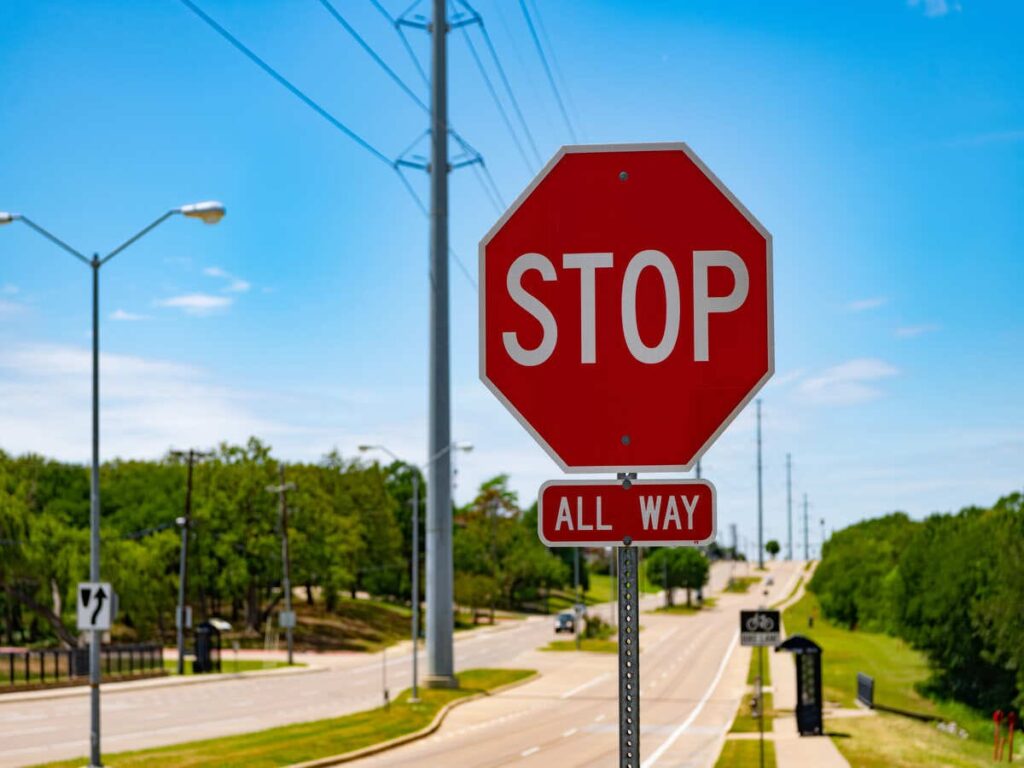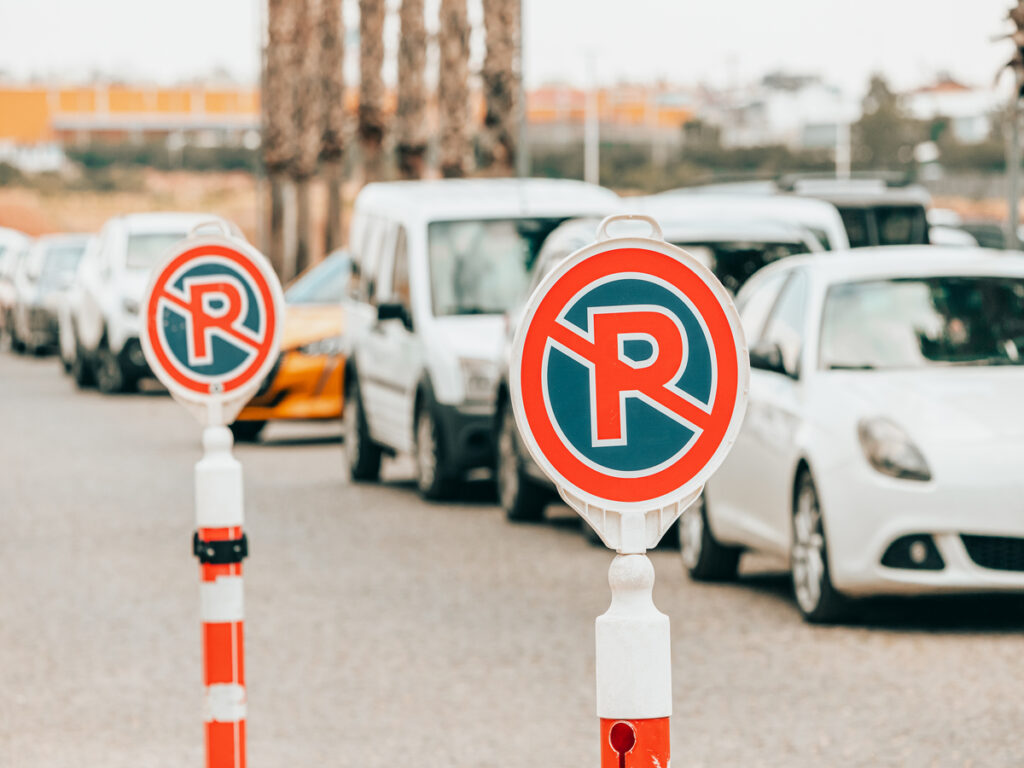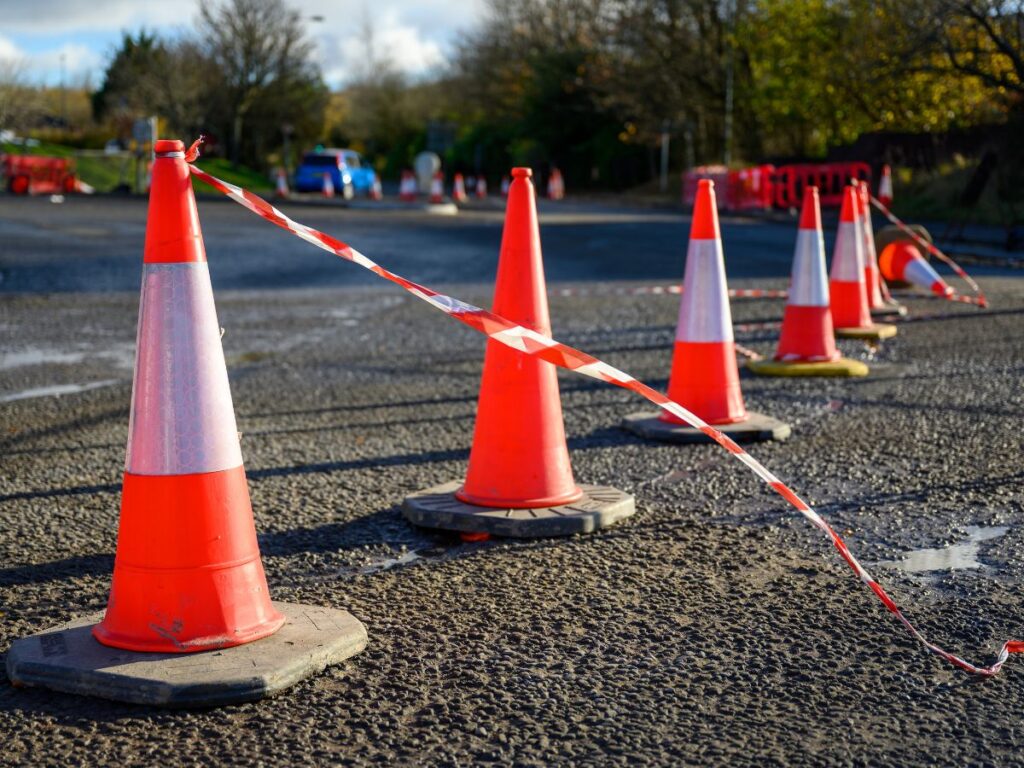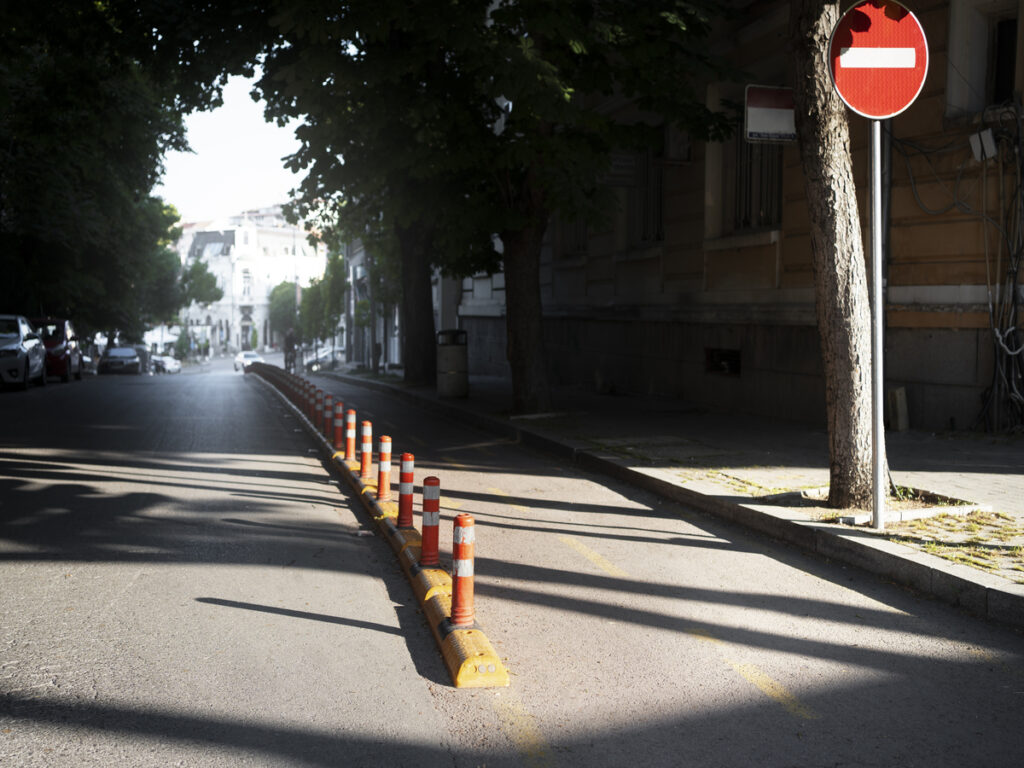
Channelizers and road delineators are essential traffic control devices that enhance road safety and traffic flow, especialmente em zonas de construção, rodovias, and high-risk areas. Understanding their differences is crucial when choosing the right device for your specific traffic needs. For the most durable and high-quality channelizer devices, look no further than OPTRAFFIC’s Channelizer Cone Delineators e Bollards T-top, designed for optimal visibility and safety.
Canalizadores act as physical barriers that separate lanes and guide vehicles or pedestrians. Eles melhoram a segurança, prevenindo acidentes e garantindo fluxo de tráfego suave. Esses dispositivos também aumentam a visibilidade, especialmente em condições de pouca luz.
Delineadores de estrada, por outro lado, fornecer orientação visual. Eles ajudam os motoristas a identificar limites da estrada e navegar com segurança. Ao contrário dos canalizadores, Os delineadores de estradas não são barreiras físicas, mas servem como marcadores para direcionar o tráfego. Esta distinção torna os canalizadores ideais para controlar o movimento, Enquanto os delineadores de estradas se destacam em oferecer pistas visuais claras.
Definições e recursos

O que são canalizadores?
Materiais e design
Os canalizadores são construídos usando materiais duráveis como plástico, borracha, ou metal. Esses materiais garantem que possam suportar impactos pesados e condições climáticas duras. Você costuma ver canalizadores projetados em cores brilhantes, como laranja ou amarelo, Para aumentar a visibilidade. Muitos incluem tiras ou painéis reflexivos para melhorar sua eficácia à noite. Seu design geralmente apresenta uma base robusta para evitar gorjetas e uma estrutura vertical para atuar como uma barreira física clara.
Funcionalidade e propósito
Os canalizadores servem como barreiras físicas para controlar o fluxo de tráfego. Eles guiam veículos em faixas específicas, separar o tráfego oposto, ou proteger os pedestres em zonas de construção. Você pode notar -os nas rodovias, perto de cabines de pedágio, ou em áreas com volume de tráfego alto. Seu objetivo principal é aumentar a segurança, impedindo que os veículos se cruzem em áreas restritas. Os canalizadores também ajudam a reduzir a confusão para os motoristas, marcando claramente os limites.
Para ver como os dispositivos de canalização são usados em redesenhos modernos de estradas, como dietas de estrada, Confira nosso blog: Canalizando dispositivos para dieta rodoviária: Um guia abrangente para a reconfiguração mais segura de rodovias.
Ele explora como essas ferramentas suportam mais seguras, Fluxo de tráfego mais eficiente nos ambientes urbanos em evolução de hoje.
OPTRAFFIC offers Channelizer Cone Delineators, projetado para máxima durabilidade e visibilidade. Esses canalizadores de alta qualidade fornecem controle de tráfego eficaz, Garantir a segurança e a eficiência em vários ambientes. Explore OPTRAFFIC for reliable and long-lasting channelizer solutions.
O que são delineadores de estradas?
Materiais e design
Os delineadores de estradas são normalmente feitos de materiais leves como plástico ou fibra de vidro. Esses materiais facilitam a instalação e a substituição. Você os encontrará em várias formas e tamanhos, Mas a maioria apresenta um esbelto, design vertical. Cores brilhantes e superfícies reflexivas são comuns, garantindo que eles permaneçam visíveis em todas as condições de iluminação. Ao contrário dos canalizadores, Os delineadores de estradas não foram projetados para atuar como barreiras físicas.
Funcionalidade e propósito
Os delineadores de estradas fornecem orientação visual aos drivers. Eles marcam as bordas da estrada, curvas, ou outras áreas críticas onde a visibilidade é essencial. Você frequentemente os verá em estradas rurais, rodovias, ou áreas com voltas acentuadas. Seu papel principal é ajudar os motoristas a permanecer dentro de suas pistas e navegar com segurança. Os delineadores de estradas são especialmente úteis em condições climáticas com pouca luz ou adversas, onde pistas visuais claras são cruciais.
OPTRÁFEGO oferece uma variedade de delineadores de estrada de alta qualidade como Bollards T-top , Projetado para aumentar a segurança e a visibilidade em todas as condições de direção. OPTRÁFEGO Modelos duráveis e reflexivos garantem desempenho confiável, tornando -os uma excelente escolha para gerenciamento eficaz de tráfego.
Principais diferenças

Durability and Impact Resistance: Canalizadores vs.. Road Delineators
Força material e longevidade
Quando se trata de durabilidade, canalizadores e delineadores diferem significativamente. Os canalizadores são construídos para suportar impactos pesados dos veículos. Seus materiais robustos, como borracha ou metal, garantir que eles duram mais, mesmo em áreas de tráfego intenso. Em contraste, delineadores de estradas são menos duráveis. Sua construção leve os torna mais propensos a danos sob condições semelhantes.
| Recurso | Canalizadores | Delineadores |
|---|---|---|
| Durabilidade | Capaz de suportar numerosos impactos veiculares | Geralmente menos durável em condições semelhantes |
Resistência ao clima e impacto
Os canalizadores se destacam em resistir ao clima severo e aos impactos repetidos. Seu design robusto permite que eles mantenham a funcionalidade em calor extremo, frio, ou chuva. Delineadores, enquanto resistente ao clima, pode não se sustentar tão bem sob exposição constante a condições graves. Você pode notar que os delineadores de estradas exigem substituições mais frequentes em áreas com tráfego intenso ou clima adverso.
Visibilidade: Canalizadores vs.. Delineadores
Propriedades reflexivas
Os canalizadores oferecem excelente visibilidade, especialmente à noite. Seus materiais reflexivos de alta intensidade os tornam facilmente visíveis à distância, Ajudando os motoristas na identificação de limites ou obstáculos da pista prontamente e ajustando a direção com segurança. Essa visibilidade aprimorada é crucial em condições de pouca luz.
Em contraste, Enquanto os delineadores também utilizam superfícies reflexivas, Seu perfil mais estreito e área reflexiva menor podem não fornecer o mesmo nível de eficácia que os canalizadores em condições de iluminação ruins, particularmente em ambientes de tráfego de alta velocidade.
Notavelmente, o 2024 atualização para o Manual sobre Dispositivos Uniformes de Controle de Tráfego (MUTCD) pelo Administração Federal de Rodovias (Fhwa) Enfatiza a importância de manter os níveis mínimos de retroreflectividade para dispositivos de controle de tráfego, incluindo canalizadores, Para garantir a segurança durante as condições noturnas e de baixa visibilidade.
DIA VS. Eficácia noturna
Durante o dia, Tanto os canalizadores quanto os delineadores de estradas têm um bom desempenho devido às suas cores brilhantes. À noite, no entanto, Os canalizadores se destacam. Eles melhoram a visibilidade da estrada em condições de pouca luz e ajudam os motoristas a se prepararem para as mudanças no fluxo de tráfego. Delineadores, enquanto visível, pode não fornecer o mesmo nível de orientação em ambientes mais escuros.
- Os canalizadores melhoram a visibilidade das estradas durante condições de pouca luz.
- Os materiais reflexivos usados nos canalizadores aumentam sua visibilidade à distância.
- Isso permite que os motoristas se preparem para as mudanças nas condições de condução de maneira eficaz.
Custo
Investimento inicial
Os canalizadores normalmente exigem um investimento inicial mais alto. Seus materiais duráveis e projetos complexos contribuem para o seu custo. Delineadores na estrada, sendo mais simples e mais leve, são mais acessíveis. Isso faz delineadores de estradas uma escolha popular para projetos temporários ou de baixo orçamento.
Custos de manutenção e reposição
Ao longo do tempo, Os canalizadores se mostram econômicos devido à sua longevidade. Eles exigem substituição menos frequente, mesmo em áreas de alto tráfego. Delineadores na estrada, enquanto mais barato inicialmente, pode incorrer em custos de manutenção maiores. A durabilidade menor deles significa que você pode precisar substituí -los com mais frequência, especialmente em ambientes exigentes.
Impacto de segurança
Eficácia na prevenção de acidentes
Channelizadores e delineadores desempenham papéis críticos na redução de acidentes e na melhoria da segurança rodoviária. Os canalizadores guiam os motoristas ao longo do caminho correto, o que minimiza a confusão e ajuda a prevenir acidentes. Você geralmente os vê em zonas de construção ou áreas com layouts de estrada complexos. Seus materiais reflexivos aumentam a visibilidade, especialmente em condições de pouca luz, tornando -os altamente eficazes à noite.
Delineadores, Embora não sejam barreiras físicas de tráfego, também contribuem para a prevenção de acidentes. Eles fornecem dicas visuais claras que ajudam os motoristas a permanecer dentro de suas pistas. Esta orientação é particularmente útil em estradas rurais ou curvas nítidas onde os limites podem ser menos óbvios. Marcando as bordas da estrada e as áreas críticas, Os delineadores de pista reduzem a probabilidade de veículos se desviarem do curso.
- Os canalizadores reduzem a confusão orientando os motoristas no caminho correto.
- Suas superfícies reflexivas melhoram a visibilidade, especialmente em ambientes com pouca luz.
- Delineadores oferecem orientação visual, Ajudando os motoristas a navegar com segurança através de áreas desafiadoras.
Adequação para áreas de alto risco
Em áreas de alto risco, como rodovias ou zonas com tráfego de alta velocidade, Os canalizadores provam ser uma excelente escolha. Eles direcionam o tráfego de maneira eficaz e melhoram a visibilidade, o que é crucial quando os veículos estão se movendo em alta velocidade. Seu design robusto impede que os veículos cruzem para zonas restritas, reduzindo o risco de acidentes graves. Materiais reflexivos aumentam ainda mais sua visibilidade, Garantir que os motoristas permaneçam cientes dos limites da pista, mesmo com pouca iluminação.
Delineadores, embora eficaz na marcação dos limites, pode não fornecer o mesmo nível de segurança em áreas de alto risco. Seu design leve os torna menos adequados para zonas com tráfego intenso ou alta velocidade. No entanto, Eles funcionam bem em ambientes menos exigentes, como estradas rurais ou configurações temporárias.
- Os canalizadores melhoram a segurança em áreas de tráfego de alta velocidade, orientando veículos e reduzindo a confusão.
- Seus materiais reflexivos aumentam a visibilidade, Ajudando a conscientização do motorista em condições de pouca luz.
- Os delineadores são mais adequados para aplicações de baixo risco ou temporárias.
Ao entender os pontos fortes de cada dispositivo, Você pode escolher a opção certa para melhorar a segurança e reduzir os acidentes em qualquer ambiente.
Choosing the Right Traffic Device: Canalizadores vs.. Road Delineators
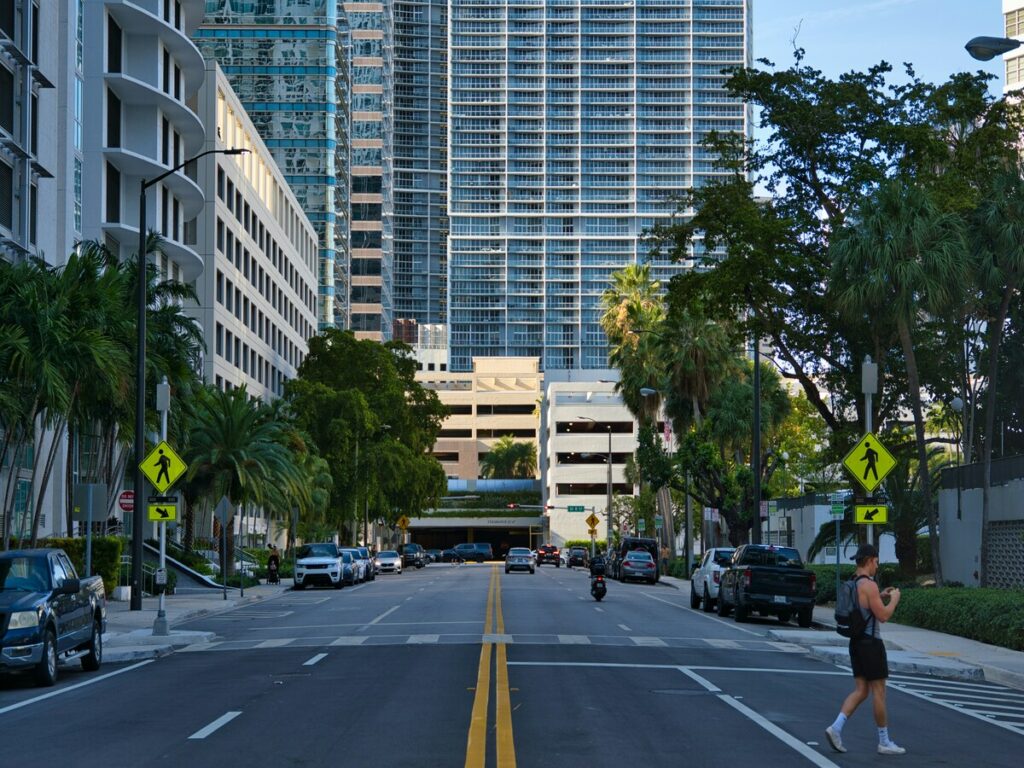
Fatores a serem considerados
Volume de tráfego e velocidade
Ao selecionar equipamentos de segurança de trânsito, Você deve avaliar o volume e a velocidade dos veículos na área. Zonas de tráfego intenso ou rodovias com veículos em movimento rápido exigir um nível mais alto de proteção. Canalizadores, com seu design robusto, Excel em tais ambientes. Eles separam as faixas de maneira eficaz e orientam o tráfego com segurança. Em contraste, Os delineadores de pista funcionam bem em áreas com tráfego moderado ou velocidades mais lentas. Seu design leve os torna ideais para marcar limites sem obstruir o movimento.
Condições ambientais
Fatores ambientais desempenham um papel crucial na escolha do equipamento certo. Os canalizadores têm um bom desempenho em zonas de trabalho com condições climáticas duras. Seus materiais duráveis resistem ao calor extremo, frio, e chuva. Delineadores, no entanto, oferecer flexibilidade em clima adverso. Eles se dobram sobre o impacto e retornam à sua posição original, Tornando -os confiáveis em áreas propensas a ventos fortes ou queda de neve forte. Para canteiros de obras ou estradas rurais, Você deve considerar como cada opção resiste aos desafios ambientais.
Restrições orçamentárias
O orçamento geralmente influencia sua escolha de equipamento de segurança de tráfego. Os canalizadores requerem um investimento inicial mais alto devido ao seu design e materiais robustos. No entanto, Sua longevidade os torna econômicos para projetos de longo prazo. Delineadores, sendo leve e acessível, projetar projetos com restrição de orçamento. Sua facilidade de instalação e baixos custos de substituição os tornam uma escolha prática para configurações temporárias ou aplicativos de menor escala.
Esclarecimento -chave: Os canalizadores são um tipo de delineador
Você pode se perguntar como canalizadores e delineadores de pista se relacionam. A resposta está em seu propósito compartilhado. Ambos visam orientar o tráfego e melhorar a segurança. No entanto, Os canalizadores representam um tipo especializado de delineador na estrada. Seu design e funcionalidade os diferenciam de outros delineadores de pista.
Como os canalizadores diferem de outros delineadores
Os canalizadores se destacam devido ao seu design robusto e capacidade de agir como barreiras físicas. Ao contrário dos delineadores padrão na estrada, que fornece principalmente orientação visual, Os canalizadores combinam elementos visuais e físicos para controlar o tráfego de maneira eficaz. A tabela abaixo destaca as principais distinções:
| Recurso | Canalizadores | Delineadores |
|---|---|---|
| Projeto | Afixado para o pavimento, robusto | Geralmente portátil, menos robusto |
| Função | Crie barreiras visuais, orientar o tráfego | Fornecer orientação básica |
| Aplicativo | Usado em ambientes complexos | Usado em situações de trânsito mais simples |
Recursos únicos de canalizadores
- Os canalizadores suportam impactos veiculares, tornando-os ideais para áreas de alto risco.
- Eles criam uma barreira visual que orienta o tráfego e evita violações da pista.
- Você geralmente os verá usado em série para aprimorar o controle de tráfego em zonas de construção ou rodovias.
Por que isso importa
Compreender essa distinção ajuda você a escolher a ferramenta certa para suas necessidades de gerenciamento de tráfego. Se você precisar de uma solução para ambientes complexos ou de alto risco, Os canalizadores oferecem a durabilidade e a funcionalidade necessárias. Para aplicações mais simples, Os delineadores padrão oferecem uma opção acessível e eficaz.
Reconhecendo os canalizadores como um tipo de delineador na estrada, Você pode apreciar melhor o papel deles na segurança do trânsito. Esse conhecimento garante que você tome decisões informadas ao selecionar ferramentas de orientação de trânsito.
Compreender as diferenças entre canalizadores e delineadores ajuda você a tomar decisões informadas para gerenciamento de tráfego. Os canalizadores agem como barreiras físicas, separando faixas e veículos orientadores em áreas de alto risco. Delineadores, por outro lado, Sirva como marcadores visuais, indicando limites e direções da pista. Ambos os dispositivos melhoram o fluxo de tráfego e reduzem a confusão, especialmente em zonas de trabalho complexas ou de alta velocidade.
Escolher a ferramenta certa depende de suas necessidades específicas. Os canalizadores fornecem barreiras de proteção positiva nas áreas de construção de estradas, garantindo proteção e segurança do trabalhador. Delineatores na estrada Excel ao oferecer orientação visual em ambientes menos exigentes. Usando esses dispositivos de controle de tráfego de maneira eficaz, você aprimora a segurança e a eficiência nas estradas.
Perguntas frequentes
Qual é a diferença entre um cone de tráfego e um delineador?
UM Cone de trânsito is a cone-shaped, portable device typically used to temporarily redirect traffic. They are commonly found in short-term traffic control situations, like construction zones or detours. Por outro lado, a delineator is a taller, Post mais fino com tiras reflexivas, designed for guiding traffic over longer distances or defining lanes, especialmente em condições de baixa visibilidade.
If you’re looking for reliable and durable Cones de trânsito à venda, check out our range at OPTRÁFEGO. Our high-quality cones are designed to withstand heavy use in any traffic control scenario.
O que é um delineador no trânsito?
UM tráfego delineador is a vertical post with reflective elements, installed along roadways to guide and warn drivers by indicating lane boundaries or road alignment. These devices are especially effective in low-visibility conditions like fog, chuva, ou dirigir à noite.
O que é um canalizador na construção?
Um canalizador é um dispositivo de controle de tráfego usado para definir claramente um caminho para veículos ou pedestres, particularly in construction zones. They include devices like cones, bateria, e barreiras, designed to maintain traffic flow while keeping construction workers safe. To ensure the best traffic flow control, considerar purchasing Channelizer Cone Delineators from OPTRAFFIC. Our durable and highly visible products provide robust protection in construction and high-traffic areas.
What is the difference between a channelizer and a road delineator?
Um canalizador é uma categoria mais ampla que inclui qualquer dispositivo usado para orientar o tráfego, such as cones, barris, e barreiras. These are often used in high-traffic areas to physically separate lanes or paths. Em contraste, a delineator is a specific type of vertical post used primarily for indicating alignment or lane division, especialmente em áreas onde a visibilidade é comprometida. Whether you need a channelizer or a delineator, OPTRÁFEGO oferece alta qualidade, durable solutions like Channelizer Cone Delineators and T-Top Bollards to meet your traffic control needs.
Can I buy channelizers and delineators in bulk?
Sim! No OPTRÁFEGO, we offer both channelizers and road delineators for bulk purchase, ideal for large projects such as construction zones, rodovias, and city roads. Contact us for special rates on bulk orders and to find the best products tailored to your traffic safety needs.
Why should I choose OPTRAFFIC’s channelizers and delineators for sale?
OPTRAFFIC’s road channelizers and traffic delineators are designed to offer the highest visibility and durability in even the most challenging conditions. Whether you are managing traffic flow in construction zones or ensuring safety on highways, our products are built to last and help guide traffic effectively. For a limited time, enjoy discounts on bulk orders of our top-selling traffic control products.

